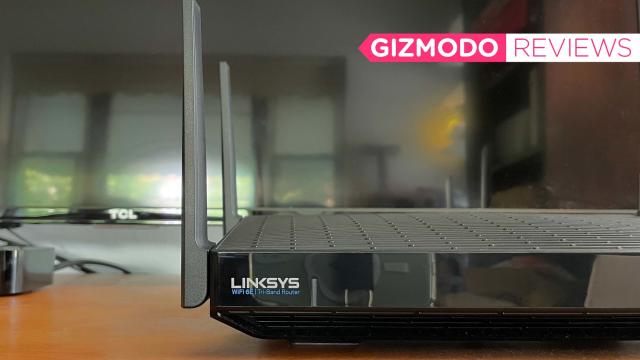In home networking, bigger isn’t always better. Anyone who has spent time with the diminutive Eero or Ubiquiti AmpliFi routers can attest to this. Case in point: The Linksys Hydra Pro 6E is a pretty big router, though it doesn’t feel like it, yet it seems like Linksys put stability ahead of blasting data every which way but loose.
In the several days I spent with it as my primary router, just from a network stability perspective, the only noticeable difference between it and my normal Wi-Fi 5-based mesh setup was that things seemed to happen a touch faster. My network, mind you, is almost all 802.11ac (Wi-Fi 5’s more technical designation) devices, so the improvements I saw were not the result of Wi-Fi 6E or even Wi-Fi 6 improvements. But I wouldn’t, personally, consider this for my primary router, yet. Before I get to why, let’s go over some details.
We’ve reviewed the other Wi-Fi 6E routers that are part of the first wave to be certified by the WiFi Alliance, including the Linksys mesh Atlas Max 6E, the Asus ROG Rapture GT-AXE11000, and Netgear’s Nighthawk RAXE500. There are definitely some drawbacks to consider for all of the Wi-Fi 6E routers now on the market — most significantly, their high price — and the same is true of the Hydra Pro.
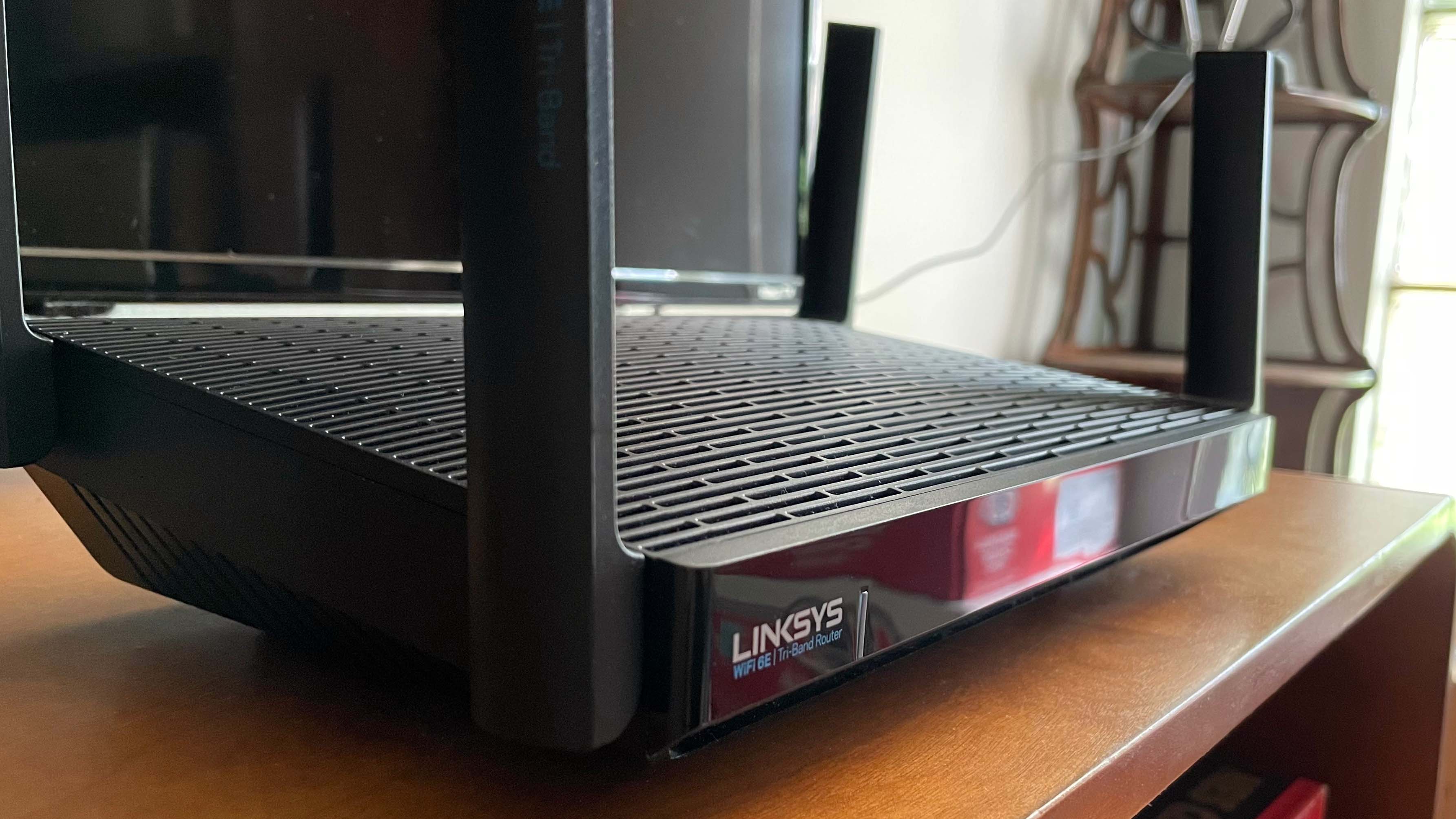
Linksys Hydra Pro 6E
What is it?
Linksys’ first standalone Wi-Fi 6E router
Price
$US499 ($640)
Like
Not terrible looking; easy to set up and manage; kept network stable; the 5 GbE WAN port is future-proofed
Don't like
Not enough configurable options; overall performance was fine, but not dazzling; pretty expensive for what it offers
Editor’s Note: Stay tuned for local Australian pricing and availability.
Pretty Design and Plenty of Ports
The Hydra Pro 6E, which is now shipping to customers who’ve ordered from the Linksys website, is a broad, flattish unit with a pretty nice, minimalist appearance that belies its size. At just shy of 11 inches wide, it’s actually wider than the beefy Asus Rapture. Front to back it measures about 7 inches, making it a little easier to fit on a desk or shelf. It has four broad antennas that can be rotated forward and back, a top that is all vents with a convex surface, and a glossy front with one slit of blue light beaming out when it’s online and functioning. It’s a nice-looking router: The design language that Linksys has been using lately has been a vast improvement over the chunky blue-and-black boxes of their past. The only thing I don’t really like about it, physically, is the chunky external power supply that hates sharing a power strip with anything else.
But you’re right; it doesn’t matter if it’s pretty. So let’s talk about the gear in the rear: On the backside of the router, you’re going to find four gigabit ethernet ports, a single, horizontal USB 3.0 port, a reset button instead of a pinhole, and a rocker-style power switch. Oh, and a 5 GbE WAN port! Why, you ask, do I care about a 5 GbE WAN port, when all the LAN ports are measly gigabit? That is some old timey thinking, friend. This is a Wi-Fi 6E router! It’s got multi-gigabit speeds through the air! Who needs those LAN ethernet ports, anyway?
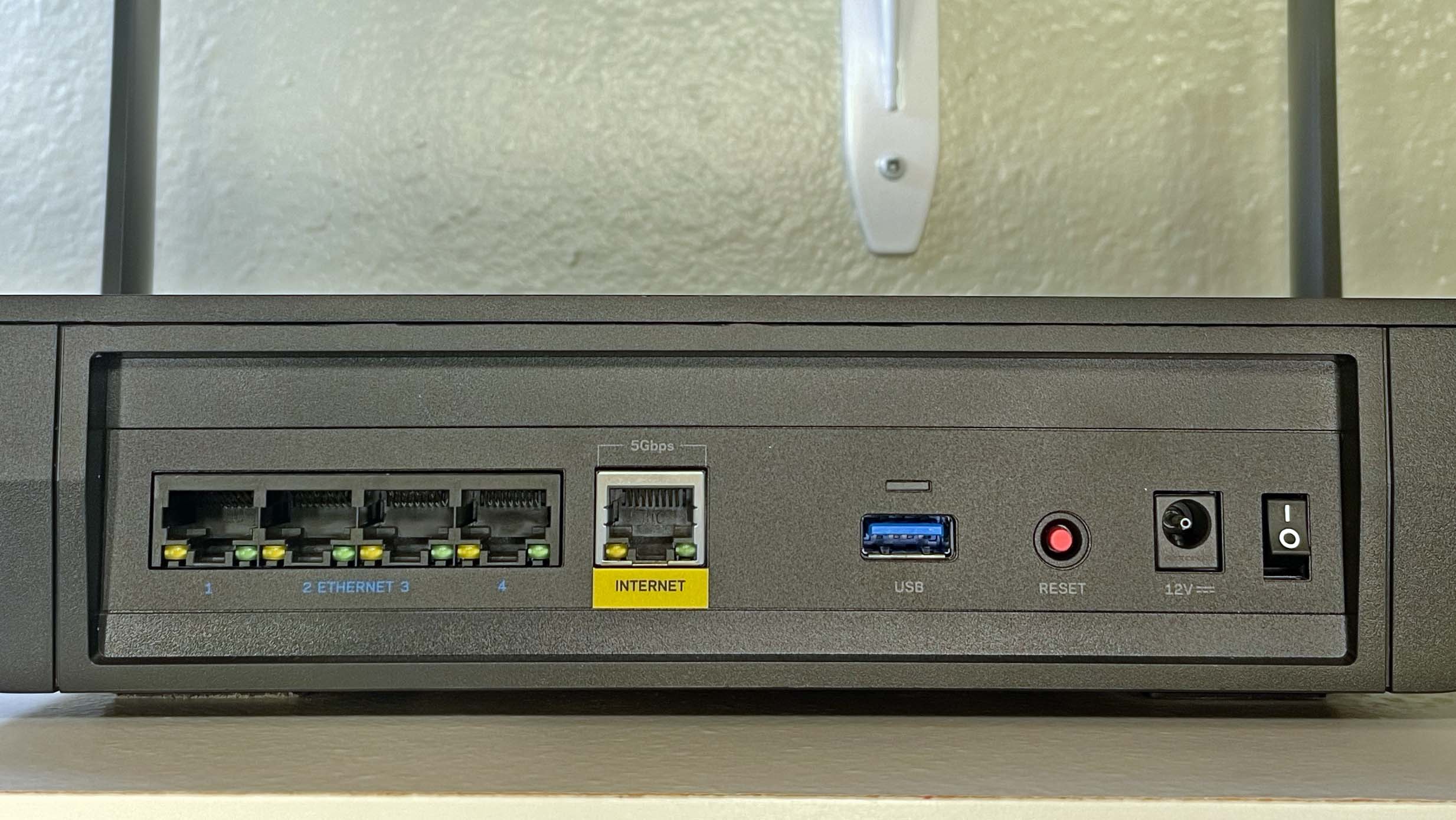
The answer, of course, is plenty of people. It’s strange that Linksys opted for a 5 GbE WAN port and chose to limit all the LAN ports to gigabit. After all, the vast majority of people have sub-gigabit internet and can’t actually take advantage of that WAN port, whereas a 2.5Gb-or-better LAN port is legitimately useful for other purposes on a local network! Internally, the router’s 1.8 GHz quad-core processor is almost certainly the same Broadcom BCM4908 processor that’s driving most, if not all, of the current batch of Wi-Fi 6E (and some Wi-Fi 6) routers on the market. This means it’s more than powerful enough to push data quickly through its massive pipes, but it does so with half the RAM of some of its peers, like the Asus ROG Rapture or the Netgear Nighthawk RAXE500, which both boast 1GB of RAM.
Let’s Talk Performance
At close range, using a Wi-Fi 6E-supported Samsung Galaxy S21 Ultra, I saw transfer speeds of over 1.8 Gbps, which is nearly twice the speed you would expect over a gigabit wired connection. Those transfer tests were going to my M1 MacBook Air, which was hardwired with a Plugable 2.5 GbE USB-C adaptor. Performing the same tests wirelessly with another Galaxy S21 Ultra as the server on the same 6 GHz band, transfer speeds were essentially half that. This is is to be expected, as wireless transmission is a half duplex affair, meaning if the router is transferring data to a second device on the same band, it’s going to divide the bandwidth between them. There are tricks to make this less of an issue: OFDMA and MU-MIMO, two techniques that work to divvy up channels into sub-channels in the case of the former, and transmit to multiple devices at once for the latter, in theory could allow for full-duplex wireless transmission that more closely resembles the work a network switch performs, but we are not quite there yet.
The trouble with Wi-Fi 6E is that those speeds come courtesy of the newly opened, higher-frequency 6 GHz band. If you’ve explored the technical side of Wi-Fi at all, you likely know that lower frequencies transmit better through solid objects and over long distances — this means a more stable connection, and is one of the reasons why so many low-bandwidth IoT devices are designed only to work on the 2.4 GHz band. The fastest band until now for normal Wi-Fi 6 devices is the 5 GHz band. It’s less crowded than 2.4 GHz and capable of higher throughput, but is limited in its range. The 6 GHz band, being an even higher frequency, is going to be even more range-limited, and it shows on this and other Wi-Fi 6E routers I’ve looked at.
In testing the Hydra Pro I saw wildly fast wireless speeds on the 6 GHz band when in the same room with it, and precipitous drops upon leaving that room, averaging 427.5 Mbps in tests 7.62 m out in my dining room. It’s still faster than similar speed tests done with Wi-Fi 6 on the 5 MHz band, which saw an average 282.13 Mbps using a Wi-Fi 6-capable M1 MacBook Air. This was also true out to about 13.72 m, when I continued testing in my backyard. It’s easy to feel impressed by this.
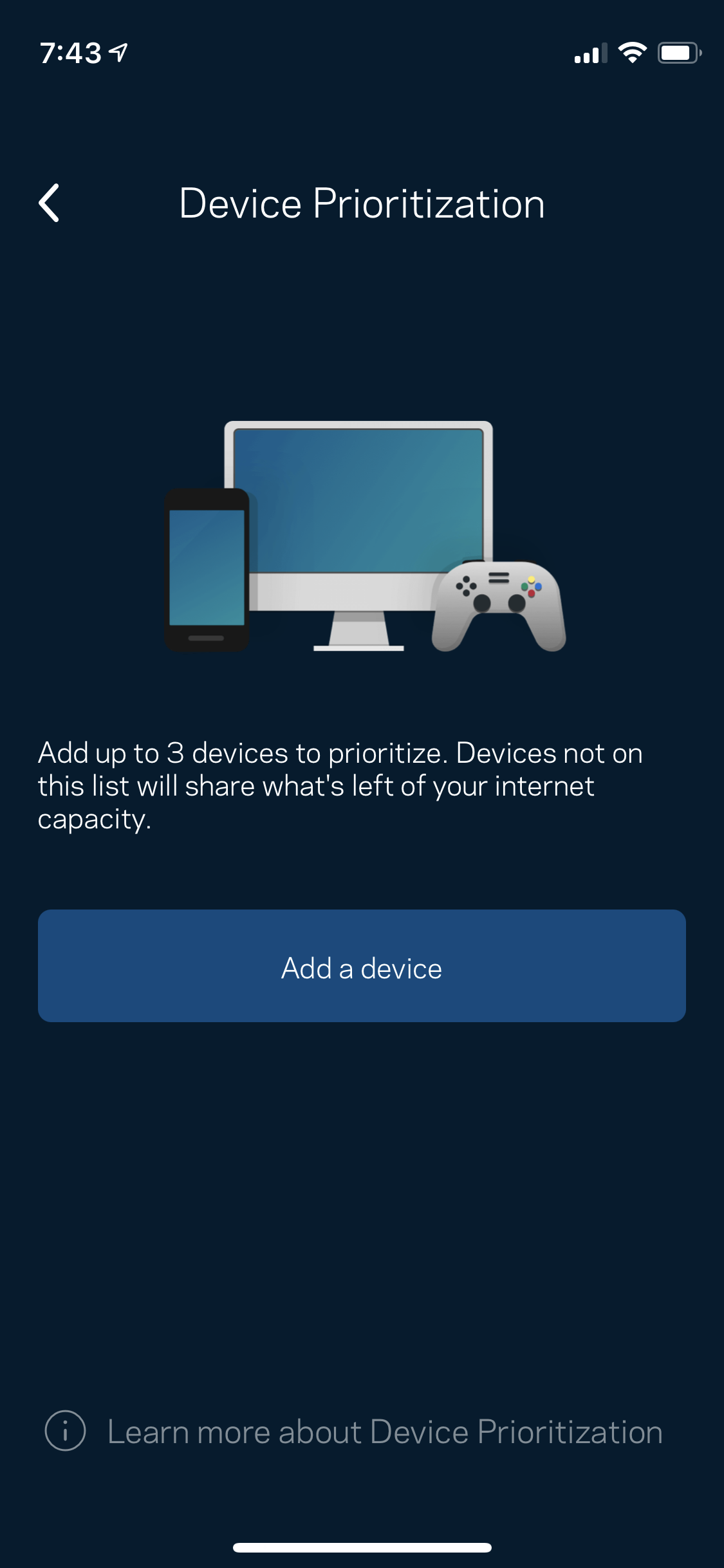
However, when I referred back to testing data from the gaming router comparison piece I did last year, I found that the still-excellent Wi-Fi 5 Netgear XR500 approached Hydra Pro’s Wi-Fi 6E numbers at 13.72 m (265.23 Mbps vs 357.83 Mbps respectively). Sticking to just the 5 GHz band, if you compare the XR500’s numbers to the Hydra Pro’s Wi-Fi 6 throughput, things get even less favourable for the new Linksys router, with the XR500 coming out on top in all but the closest tests.
The gaming-focused XR500 also boasts almost twice the range, so perhaps this isn’t exactly a fair comparison. That said, it does illustrate the benefits of using the pristine, uncrowded 6 GHz band. And in the Hydra Pro column, we also see outstanding Wi-Fi 6 performance on the 2.4 GHz band — thanks, presumably, to Wi-Fi 6 improvements — with the Linksys demolishing the Netgear. Still, 2.4 GHz and up-close 6 GHz performance notwithstanding, most people’s bandwidth-hungry devices operate on the 5 GHz band, using the Wi-Fi 5 protocol, and here you can find many fantastic and much cheaper plain Wi-Fi 6 routers and even Wi-Fi 5 routers that outdo this Linksys unit.
Speaking of gaming routers, I played some online games with the Hydra Pro, and I found it to be decent, but not astonishing. You should generally play online games with a hardwired connection, but there are those who simply don’t have that choice. For that application, the Hydra Pro 6E seems fine, though during a couple of gaming sessions while others were in the house using the internet, I did see some fairly bad lag spikes. I saw some improvement when I turned on the device prioritisation settings, with lag spikes not quite so disruptive; otherwise, subsequent sessions were far more stable, and my ping stayed fairly consistently in the 60-90 ms range when connected to official servers. On the whole, while the Hydra Pro is definitely not for anyone with professional gaming aspirations, it’s certainly fine for more casual online play.
Configuring Your Router
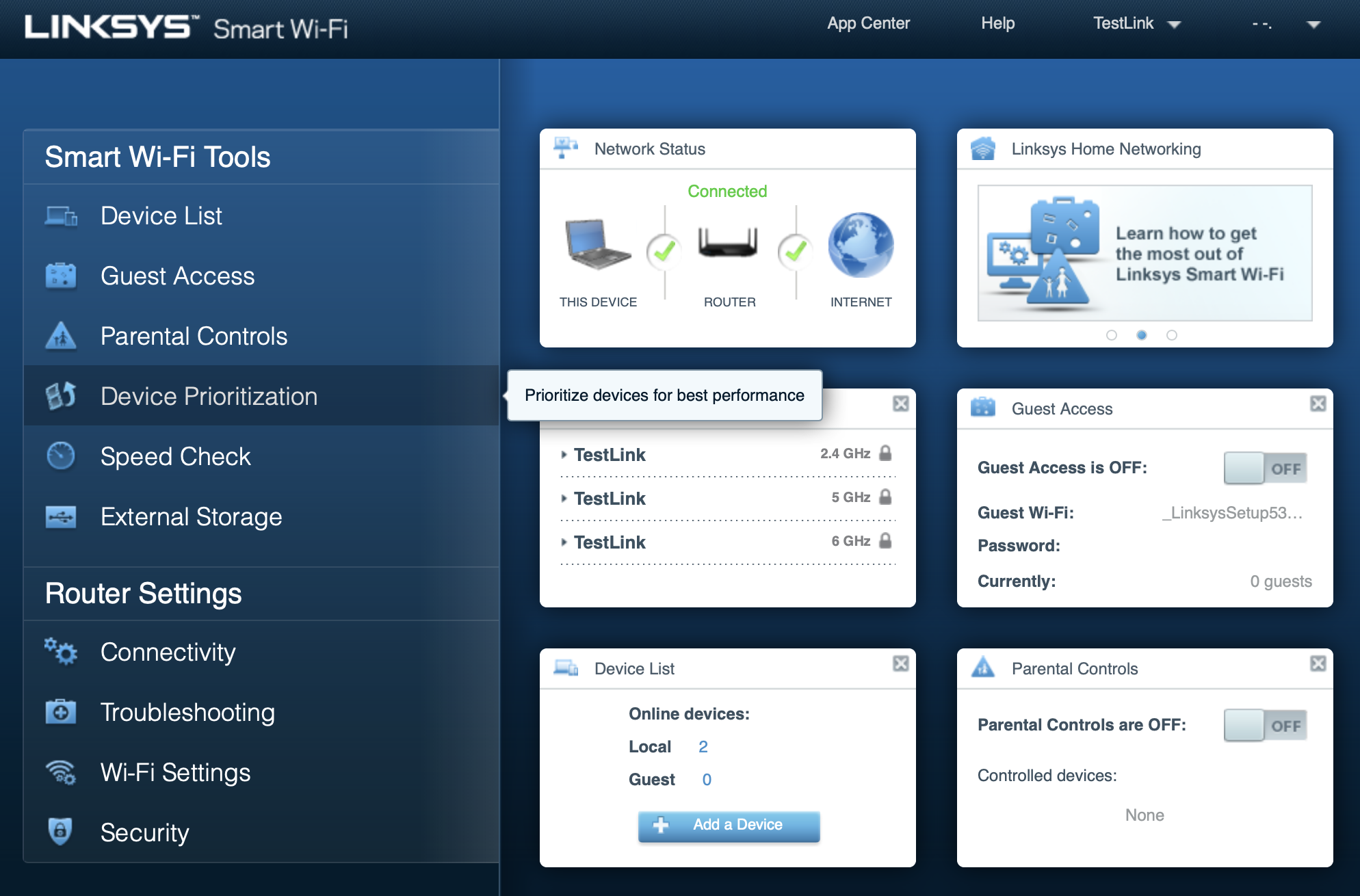
On the software side, I found the Linksys UI — both the browser and the mobile versions — to be very straightforward and easy to understand, if limited in what it enables you to do. This isn’t a bad thing for most people, because the kind of advanced configuration a network admin might want to do is simply out of reach for a normal person. That said, it’s not like Linksys hasn’t allowed users to take more control in the past. The Linksys MR9000, for instance, lets you click an obscure link at the bottom right of the screen simply titled “CA” brings you to a wealth of admin-style options.
The Hydra Pro is clearly targeting only the general consumer segment, as the only additional option you get when you click that link is a tab under the Connectivity settings menu labelled “Velop Setup”, which lets you add nodes, if you decide you want to get another Velop device and make a mesh network. If you prefer a mobile app, theirs is pleasant, though it could use a little more tweaking. Looking through the menus, for instance, can be somewhat annoying, as tapping the back button from certain pages can take you all the way back to the home page, so if you’re trying to find a specific setting, you may have to repeatedly reopen the settings menu.
To Buy Or Not to Buy?
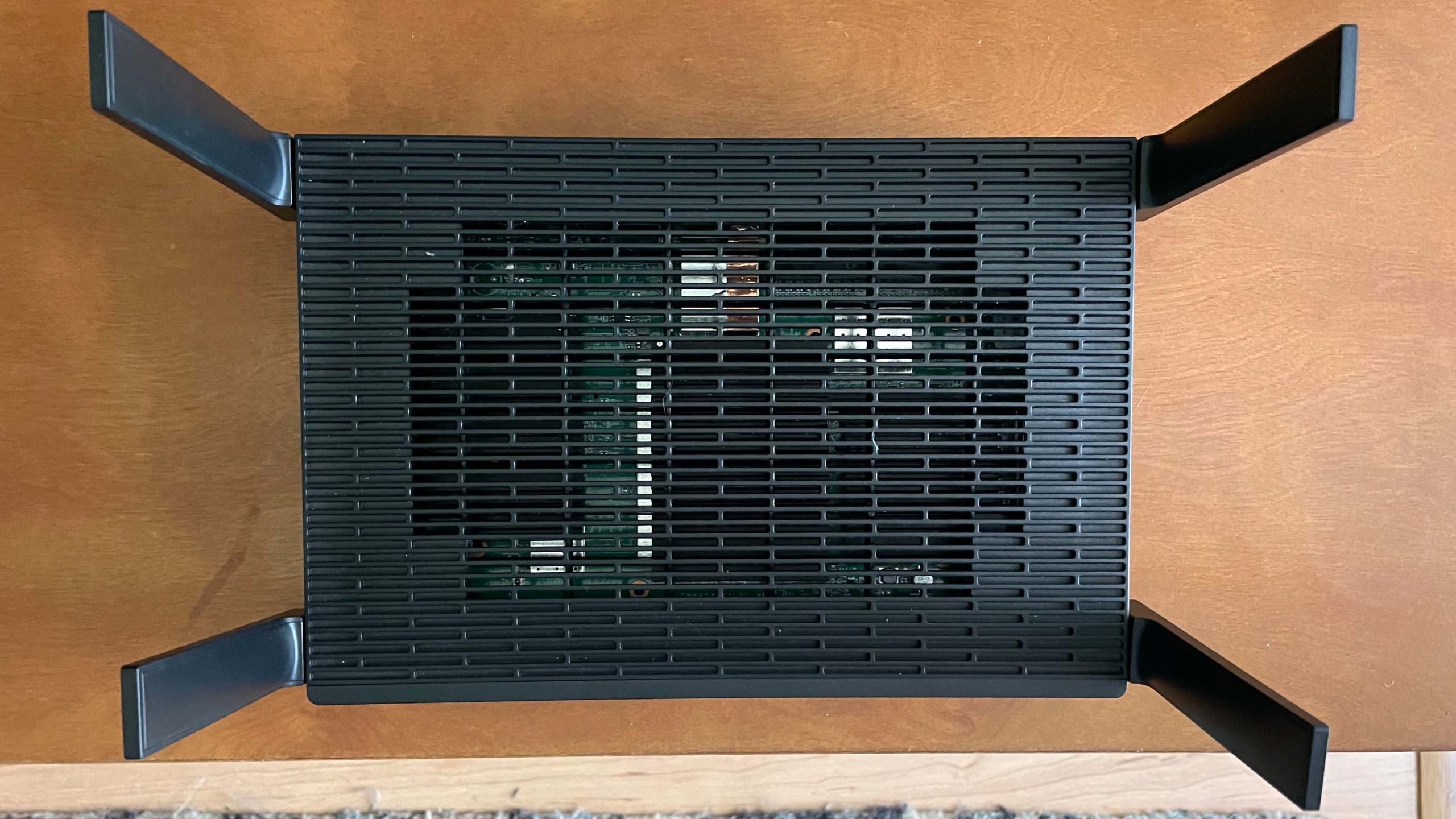
I find the Linksys Hydra Pro 6E to be a somewhat confusing product. It doesn’t really commit to the “Pro” moniker, which would be fine except for that price. At $US500 ($641), I would hope for longer range, better throughput, lower latency or some more granular configuration options. At the moment, it’s also lacking some of the network-level security features that are enjoyed by users of many of Linksys’ previous routers, though they do intend to bring these features to the Hydra Pro.
Right now, for significantly less money, you can buy Wi-Fi 6, or even some Wi-Fi 5, routers that perform roughly on par with this one, barring those unobtainable up-close 6 GHz speeds. For just a touch more money, you can pick up some strikingly-fast routers with significantly-boosted range, far better gaming performance, and great overall performance on all bands – not just the 6 GHz band. I’m sure it’s fantastic as a component in a Velop setup, but again, for $US500 ($641)… why? The Linksys Hydra Pro 6E is good; if someone gave one to me, I would be perfectly satisfied with it. But boy, if you then told me the price, my eyes might fall out of my skull.
